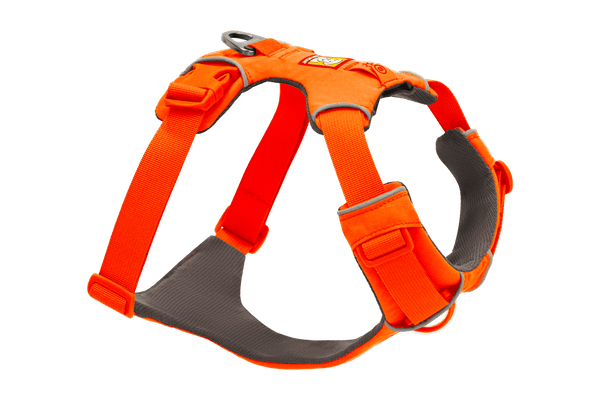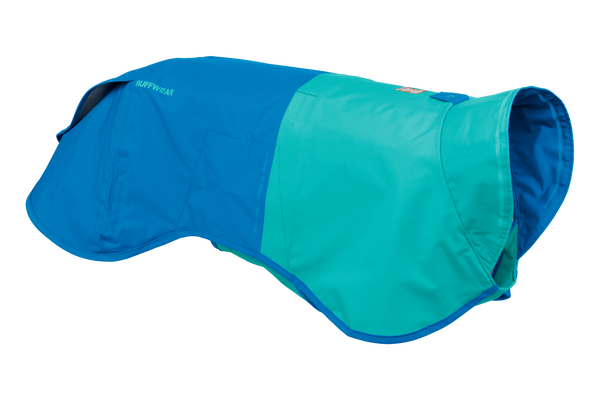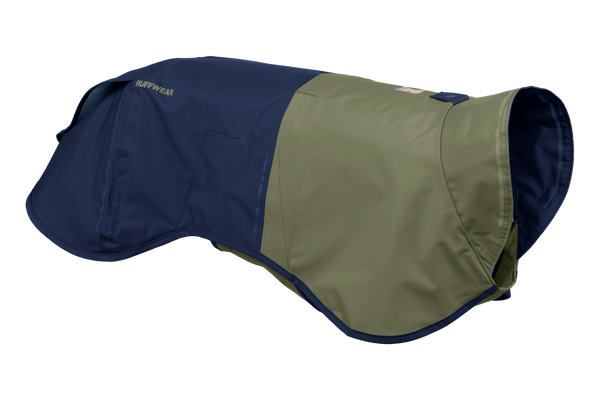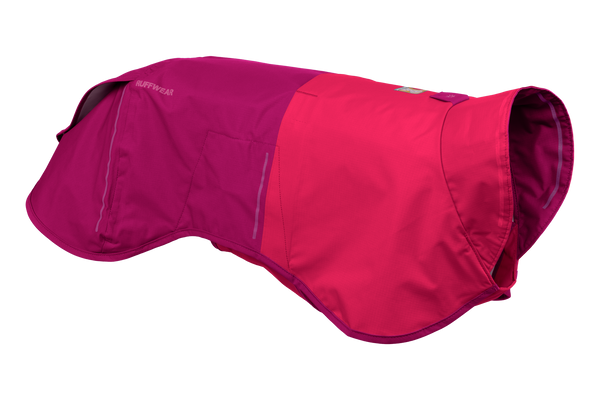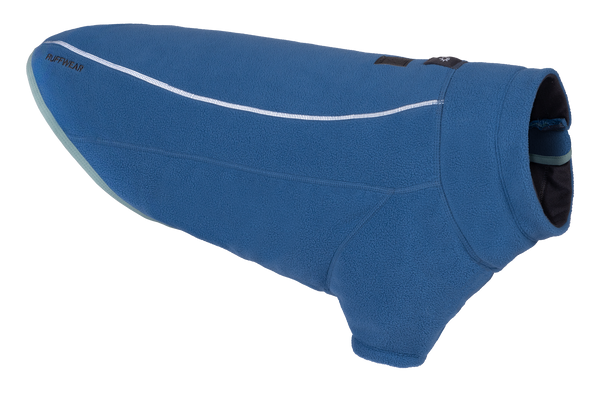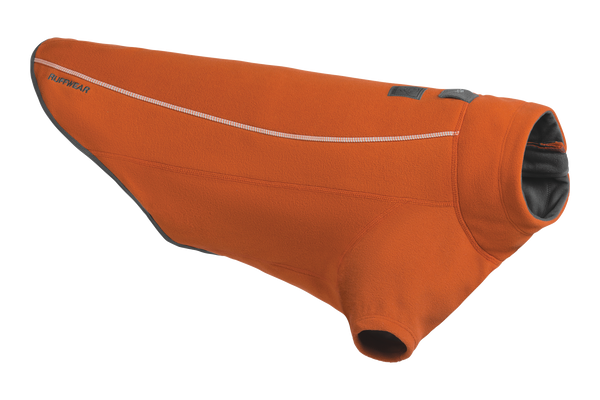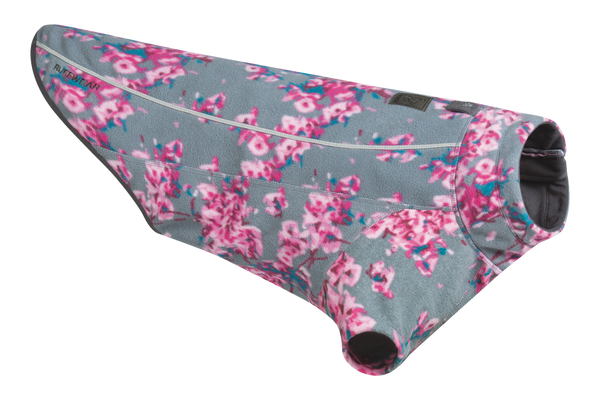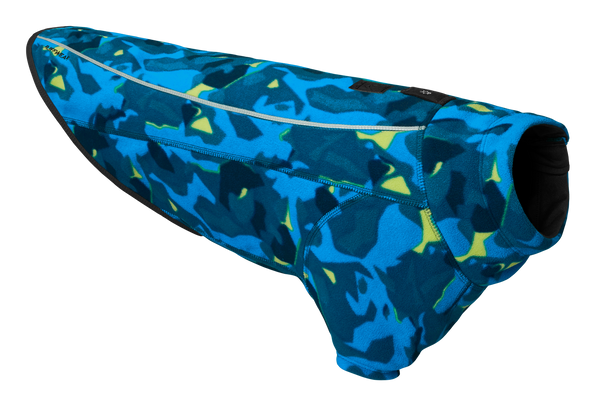Gemeinsam Bikejöring entdecken
Mein erster Rettungshund, Ash, lernte die Freuden des Radfahrens in der Stadt kennen. Er begleitete mich auf kurzen Fahrten zur Arbeit und täglichen Läufen, während er angeleint neben dem Fahrrad herlief. Bald stiegen wir auf das Radfahren auf Trails und längere Schotterstrecken um. Schließlich etablierte sich Ash als mein Bikepacking-Partner.

Dann, im Januar vor zwei Jahren, trat Leo in unser Leben. Ich war mir nicht sicher, ob ich noch einen Hund adoptieren sollte, aber da Ash älter wird, schien es eine gute Idee zu sein, einen jüngeren Hund mit auf längere, intensivere Radtouren zu nehmen. Als Husky-Malamute-Mischling ist Leo wie geschaffen für das Fahrrad. Er kann lange Strecken über unterschiedliches Gelände zurücklegen und genießt den Nervenkitzel von Hochgeschwindigkeits-Ausdauersportarten.
Obwohl ich mich darauf freute, einen neuen Hund in unser Zuhause zu holen, hatte Leo verschiedene Verhaltensprobleme, die behoben werden mussten, bevor er vor mein Fahrrad gespannt werden konnte. Zuerst mussten wir unsere Bindung verbessern und lernen, miteinander zu kommunizieren. Dies taten wir durch strukturierte Trainingseinheiten, individuelle Spaziergänge und Wanderungen, indem wir ihm Raum gaben, sich auszudrücken, und kooperative Pflege, um ihm zu helfen, sich an Aktivitäten wie die Fellpflege zu gewöhnen. Nachdem er sich ein paar Monate lang in seinem neuen Zuhause eingelebt hatte und einige der schwerwiegenderen Verhaltensprobleme in den Griff bekommen hatten, begannen wir mit dem Training fürs Bikejöring.

Ich hatte schon seit einiger Zeit Interesse daran, also habe ich mir fast jedes YouTube-Video über Bikejöring oder Canicross angesehen und so viele Online-Ressourcen wie möglich gelesen. Mit diesem Grundwissen konnten wir am besten damit beginnen, die Hinweise, die Leo wissen musste, in unseren Alltag zu integrieren.
Während die traditionellen Richtungszeichen beim Hundeschlittenfahren „gee“ und „haw“ sind, habe ich Leo beigebracht, mit „links“ und „rechts“ abzubiegen. Das waren Richtungszeichen, die ich meinem älteren Hund Ash zum Wandern und Radfahren beigebracht hatte. Um Leo diese Begriffe beizubringen, habe ich sie bei täglichen Spaziergängen und Wanderungen verwendet. Immer wenn wir abbogen, habe ich das mit dieser Richtung verbundene Wort gesagt, und er hat dieses Muster verstanden.

Als Leo die linken und rechten Signale immer besser verstand, habe ich neue hinzugefügt:
- Weitermachen = den Weg vor Ihnen weiterverfolgen
- Langsam = das Tempo auf Trab- oder Schrittgeschwindigkeit verlangsamen
- Whoa = halt
- Line Out = Spannung auf die Leine geben
- Mit mir = geh an meiner Seite
- Hoch Hoch = Geschwindigkeit erhöhen
- Los geht's = fang an zu laufen
Während des gesamten Trainings lernte Leo auch „Lass es“. Dies ist ein übliches Signal, das Hunden gegeben wird, um ihre Aufmerksamkeit von etwas abzulenken, das sie wollen. Das traditionelle Signal dafür beim Mushing ist „Weiter“. Da ich meinen anderen Hunden dieses Signal als „Lass es“ beigebracht habe, wollte ich es rationalisieren und entschied mich, den Befehl „Lass es“ so zu belassen, wie er ist.

Das erste Ausrüstungsstück, das wir bekamen, war ein Hundeschlittengeschirr. Wir verwenden ein X-förmiges Geschirr, das häufig bei Schlittenhunden verwendet wird. Beim Hundeschlittenfahren sind speziell entwickelte Geschirre für den Komfort Ihres Hundes und zur Erhöhung der Zugkraft unerlässlich. Nachdem wir dieses Geschirr und meinen Canicross-/Skijöring-Gürtel hatten, konnten wir Leos neue Fähigkeiten weiter testen.
Leo begann, sein X-Geschirr auf Spaziergängen und Wanderungen zu tragen, und ich ließ ihn ziehen. Anfangs gab ich keine Anweisungen, aber wenn er die Leine belastete und zu ziehen begann, benutzte ich bestätigende Worte, die zuvor im Training festgelegt wurden (z. B. „Ja, guter Junge, hoch, hoch“). Dann, als er sich mit dem Geschirr wohler fühlte, rannte ich los, damit er schneller werden konnte. Obwohl nicht alle Hunde gerne ziehen, ist Leo dafür gezüchtet. Ihm beizubringen, wie man an der lockeren Leine geht, war schwieriger, als ihm beizubringen, wie man zieht.

Wir nahmen ein paar Monate lang weiterhin ausschließlich an Trainingseinheiten im Garten und Canicross teil, und dann führte ich ein Fahrrad ein. Zu Beginn spannte ich Leo vor das Fahrrad und ging mit ihm durch die Nachbarschaft. Ich benutzte dieselben Signale, um ihn zu ermutigen, vor dem Fahrrad zu bleiben. Leo konnte nach zwei oder drei Trainingseinheiten problemlos mit dem Fahrrad gehen, also begann ich, hinter ihm zu fahren. Obwohl er beim Canicross ziemlich schnell das Ziehen lernte, war es schwieriger, ihn dazu zu bringen, das Fahrrad zu ziehen. Zum Glück hatte ich andere Hunde, die mir halfen.
Ich traf mich mit einer Frau, die ich über eine Facebook-Gruppe aus meiner Gegend kennengelernt hatte und die mehr Erfahrung im Trockenschlittenfahren hatte. Sie hatte mir online erzählt, dass viele Hunde zunächst mit dem Fahrrad verwechselt werden und dass ein anderes Team vor ihnen ihnen hilft, zu verstehen, was zu tun ist. Als Leo sah, wie ihre Hunde vor ihm losrannten, war es, als ging ihm ein Licht auf, und er rannte hinter ihnen her. Das ist jetzt über ein Jahr her und seit diesem Tag lebt er für das Fahrrad.

Wir lernen und verbessern unsere Bikejöring-Fähigkeiten immer noch. Wir haben mit dem Bikejöring mit meinem Gravelbike angefangen und diesen Frühling haben wir angefangen, einfache Mountainbike-Strecken zu laufen. In Zukunft werden Leo und ich seine Fähigkeiten auf der Strecke weiter verfeinern und nächstes Jahr damit beginnen, an einigen Anfängerrennen in unserer Region teilzunehmen. Da er in den letzten Monaten auf dem Fahrrad so große Fortschritte gemacht hat, wird dies auch der erste Winter sein, in dem wir mit ihm Skijöring machen.
